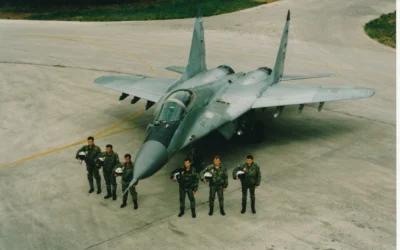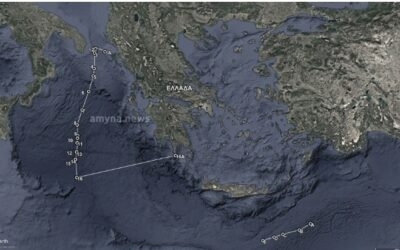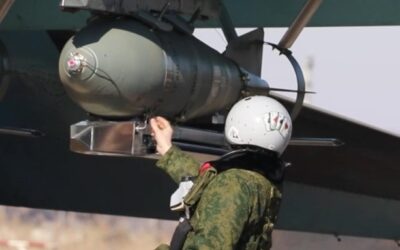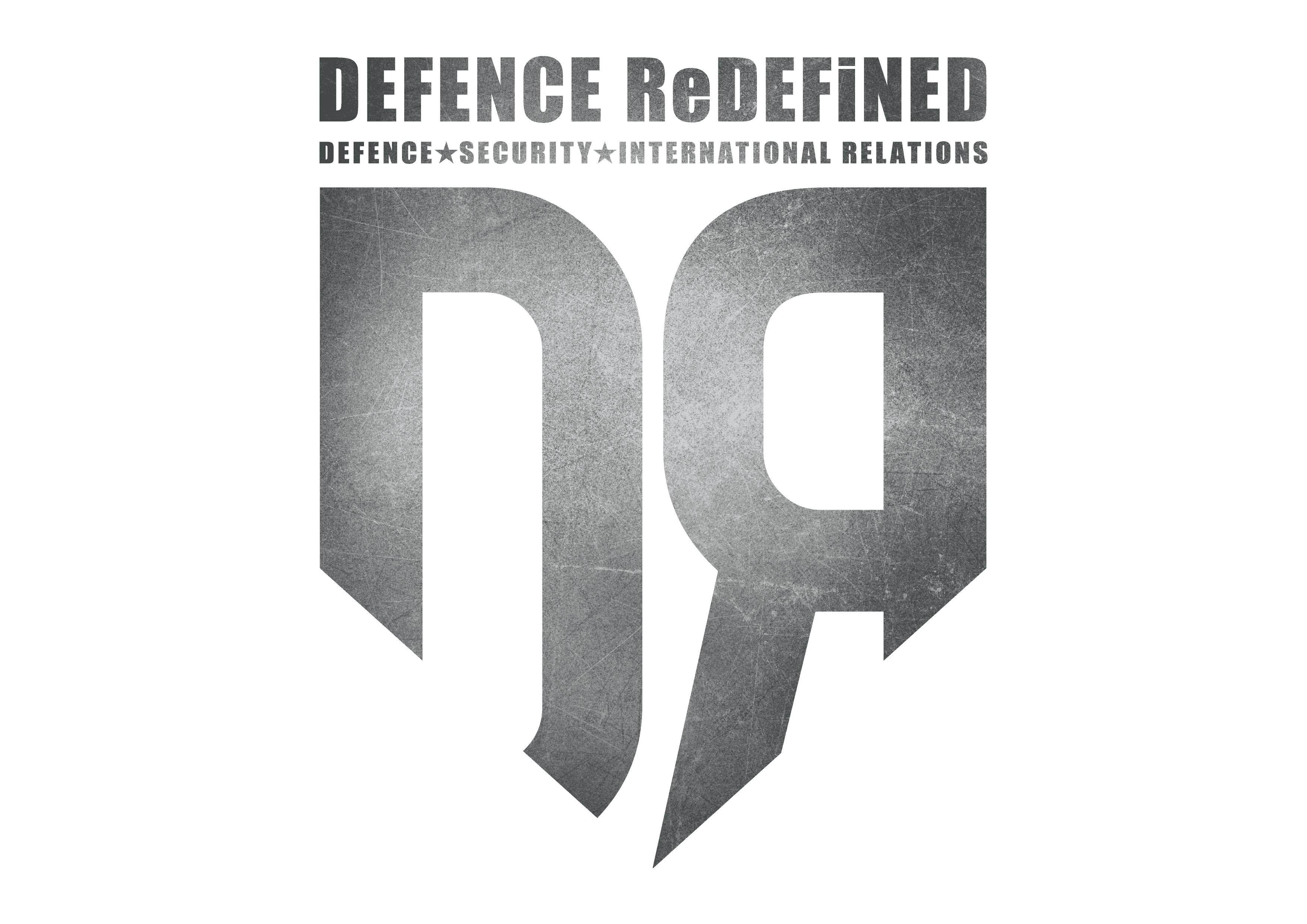OPINIONS
OPINIONS
Athanasios Tsakalos*
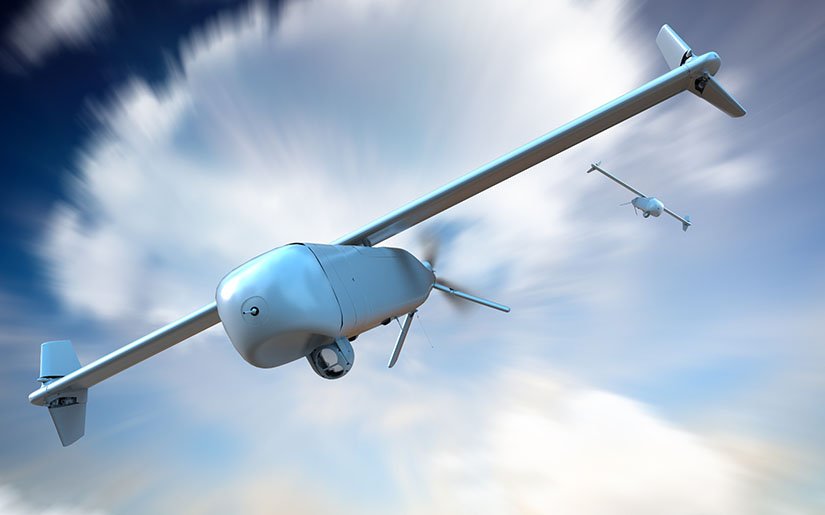
In recent years, the gradual development of Lethal Autonomous Weapon Systems (LAWSs) in the theater of operations has increased dramatically.
LAWSs are considered autonomous weapon systems not only capable of scanning an area of interest, detecting and identifying hostile targets, but also deciding independently – or not – to lock in on the threat and attack it for a quick, lethal closure. These capabilities are products of, among other things, advanced algorithms developed and enhanced by artificial intelligence (AI) technologies.
Also read: Autonomous drones mark a new warfare era – UN says they have been used in Libya – VIDEO
Israel Aerospace Industries’ (IAI) Mini-Harpy multi-purpose tactical munition belongs to this category and the purpose of this article is to present its main features and technical characteristics.
Mini-Harpy Design – Mission
The Mini-Harpy combines the capabilities of two IAI loitering munitions, the Harop and the Harpy, and is designed to provide unrelentingly up-to-date situational awareness and close the attack circle at a low cost.
Further, it seeks to neutralize radiation-emitting threats, such as radars, and to suppress/destroy enemy air defence systems (SEAD / DEAD missions) by launching attacks from shallow to vertical angles. Furthermore, the mini-Harpy can be used for attacks against armored and non-armored vehicles as well as against personnel.
Fire and Forget as well as Human-in-the-Loop function
The Mini-Harpy can be classified as either “Fire-and-forget” or “Launch-and-leave” munition, definitions that refer to munitions that do not require further human intervention as soon as they are launched. In other words, in such cases, the enemy target does not need to be “identified” by a laser or “colored” by aircraft radar.
Specifically, intelligence about target engagement is entered into the munition shortly before the launch phase. The intelligence can come from coordinate systems and radar estimates to an image of the target point. In this sense, it can be said that the Mini-Harpy is a reactive system that seeks “if-then situations”, where the system reacts according to a given sensory input.
However, the Mini-Harpy can operate in Human-in-the-Loop mode as an option, where the munition can engage targets and attack only on human command. In practice, the system is designed to allow operators to control until the last minute, thus providing options for canceling and / or repeating the mission. In any case, according to the manufacturer, this weapon system has as its principle of operation the engagement of targets, making collateral losses and losses of friendly forces unlikely.
Main Parts
Primarily, the Mini-Harpy consists of five main parts:
- a) A combat platform (land- or sea-based) loaded with the relevant sealed canisters for launching
- b) Dual electro-optical / infrared and anti-radiation seeker
- c) C4ISR systems [(Command, Control, Communications, Computers (C4) Intelligence, Surveillance and Reconnaissance (ISR)]
- d) One operator and
- e) Algorithms for weapon-system management
Mini-Harpy specifications
- Munition Weight: 40 kg
- Duration of Operation: Up to 2 hours
- Explosive Warhead: Up to 8 kg
- Operational Range: Up to 100 kilometers
- Typical Operational Altitude: 1000-5000 feet (300-1500 meters)
- Loitering Speed: 55-58 knots / Max Speed: 200 knots
- Battle Damage Assessment (BDA)
- Mission Execution under adverse weather conditions
Perhaps the most important features of this weapon system are its reduced radar signature, its silent due-to-electrical-propulsion operation, and its ability to barrage massively at enemy targets makes it particularly deadly in saturation attacks, as evidenced by the recent Nagorno-Karabakh conflict, in which Azerbaijan used unmanned aircraft and loitering munitions, including the Harop as you can see in the video below.
The modern field of operations in Greece and Cyprus
The acquisition of loitering munitions by the Hellenic armed forces and/or of the National Guard of the Republic of Cyprus should be considered tacit at some point in the future since the systems at issue combined with other weapon systems such as Unmanned Aerial Vehicles (UAVs) have radically and irreversibly changed modern warfare.
The rapid development as well as the existence of various options in the field of these systems makes them ideal for use in the operational theaters of Greece and Cyprus, with the latter being one of the densest operational theaters in the world.
Also read: Armenia – Azerbaijan | Extensive use of UAVs and the first military use of S-300 – VIDEO
* International Relations Analyst
** The views and/or comments expressed in the articles belong to each author and may not constitute an opinion and/or position and/or be adopted as is by the company and/or the site administrators. More in the terms of use of the website.
OPINION | TIME OF DECISION FOR EUROPEAN DEFENCE AND SECURITY
Although the defence, security, and protection of the territorial integrity and independence of the member states of the European Union (EU) remain primarily…
The obscure files of an anniversary or David vs Goliath: The Serbian Air Force against the 1999 NATO ‘Allied Force’ Operation
The 1999 NATO intervention in the Federal Republic of Yugoslavia (FRY) marked a significant turning point in post-Cold War military operations…
A reluctant alliance? A different approach to French – Serbian defence relations
It has only been a few months since Croatia started receiving the first of the Rafale fighter jets it ordered from France.
Greece | Declaration of EEZ in the Ionian Sea and Presentation of Maritime Spatial Map
In an initiative with significant geopolitical and economic implications, Greece has declared an Exclusive Economic Zone (EEZ) in the Ionian Sea…
Lima | Ukraine’s Game-Changing Jammer Against Russian Glide Bombs
Ukraine has deployed a new electronic warfare system that is reshaping the dynamics of aerial combat on the battlefield.
Latvia | Withdrawal from the Ottawa Treaty Banning Anti-Personnel Mines
Latvia’s parliament has approved the country’s withdrawal from the Ottawa Convention banning anti-personnel mines, citing the need to bolster national…
THEON | Publication of the Annual Financial Report for 2024
THEON INTERNATIONAL Plc (THEON) has recently published its Annual Financial Report for 2024, with the results reflecting a very strong…
Cyprus | Major General Bewick Sworn in as New British Base Commander
Major General Tom Bewick was officially sworn in as the new Area Manager of the British Bases in Cyprus during a ceremony…
OPINION | TIME OF DECISION FOR EUROPEAN DEFENCE AND SECURITY
Although the defence, security, and protection of the territorial integrity and independence of the member states of the European Union (EU) remain primarily…









